Grand Matabiau – Quais d’Oc
Grand Matabiau Toulouse is an urban development and mobility project that strengthens the metropolitan core around Matabiau Station. It helps build a sustainable city that reduces its carbon footprint and adapts to climate change. The project relies on two key levers: urban and landscape development, and mobility transformation.
Urban and Landscape Development
The goal is to create a city for everyone. The plan offers a balanced mix of housing, offices, local services, and public facilities such as a nursery, school, and gymnasium. In total, 450,000 m² of floor area are planned, including 3,000 homes, 200,000 m² of offices, and 30,000 m² of local retail and services.
In addition, the redevelopment of the Canal du Midi banks and the creation of new green spaces will help cool the city. Over 4 hectares of parks and gardens will be created, with more than 700 new trees improving biodiversity and microclimate. As a result, the area will become greener, more resilient, and more welcoming to residents and visitors.
The second lever focuses on mobility. The project transforms Toulouse-Matabiau Station into a large multimodal hub that connects trains, metro lines, buses, and soft mobility. Therefore, the station area will evolve into a central node for sustainable movement across the city and region.
- The Grand Matabiau – Quais d’Oc project follows clear urban planning principles:
- Build a low-carbon, climate-resilient city.
- Design around daily uses and social expectations, with quality of life at the core.
- Create a district accessible to all.
Finally, the strategy aligns with both mitigation and adaptation to climate change. Environmental guidelines make the project ambitious and exemplary, consistent with the French National Low-Carbon Strategy (SNBC) and the Toulouse Metropolitan Climate–Air–Energy Plan.
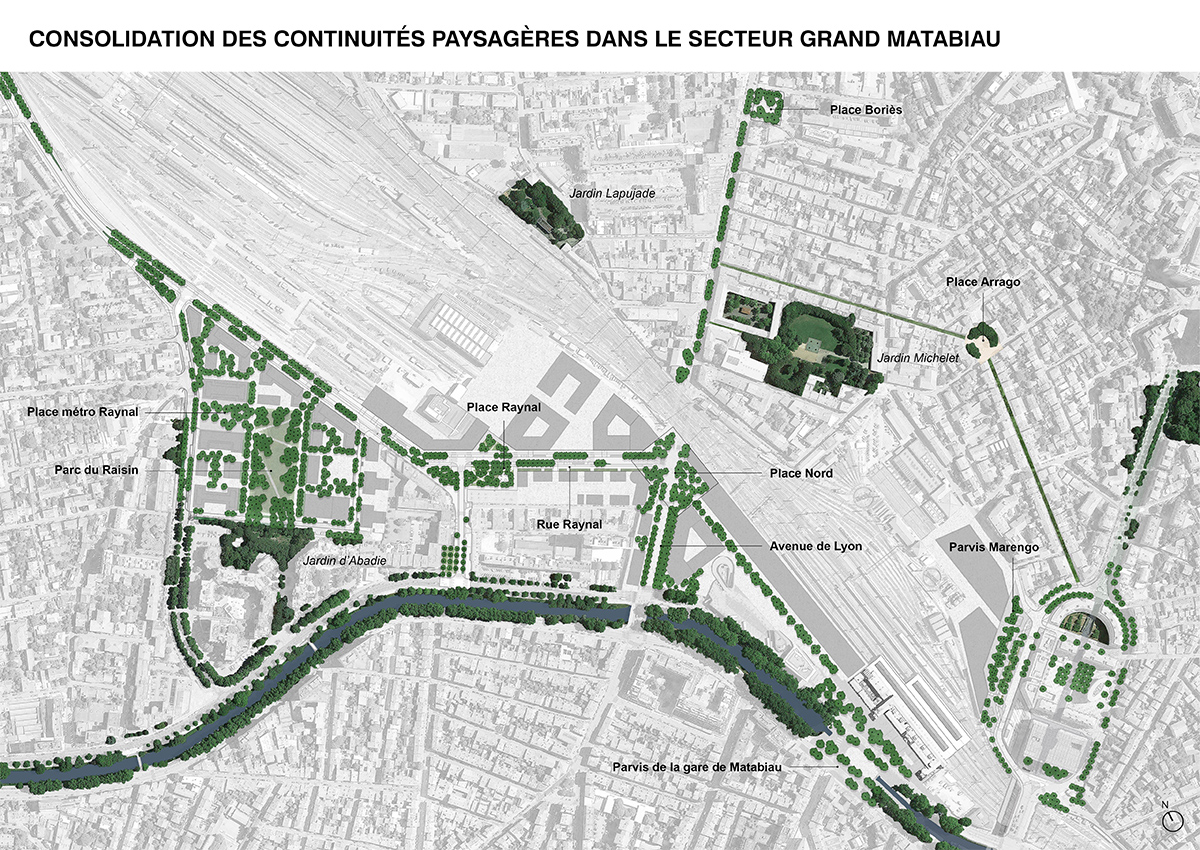
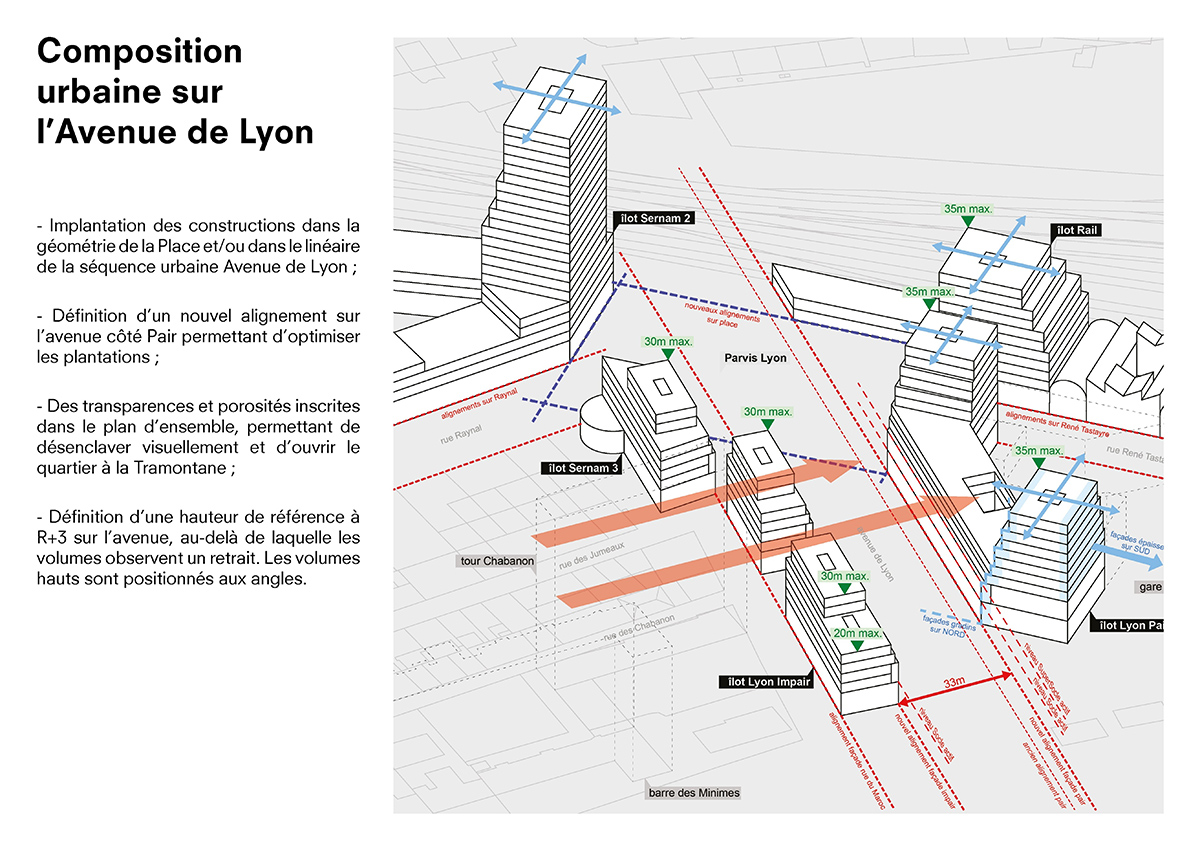

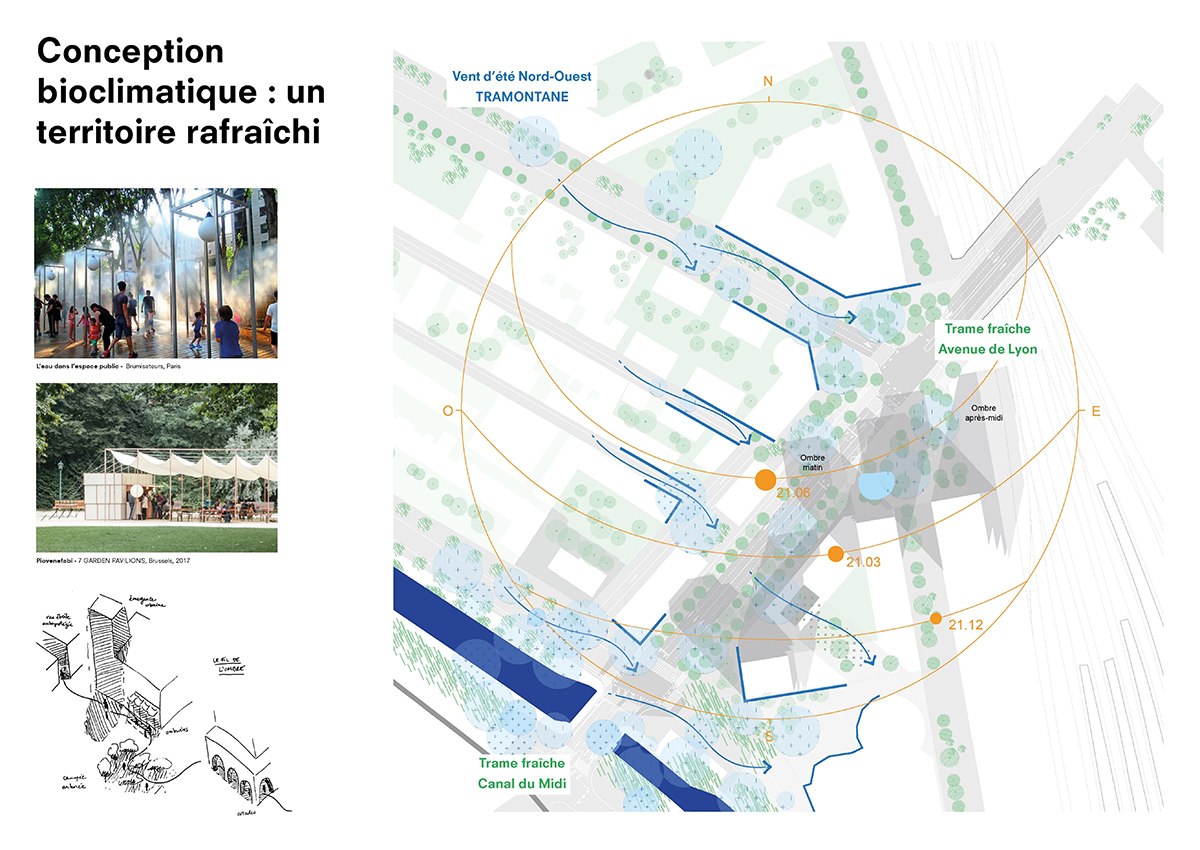
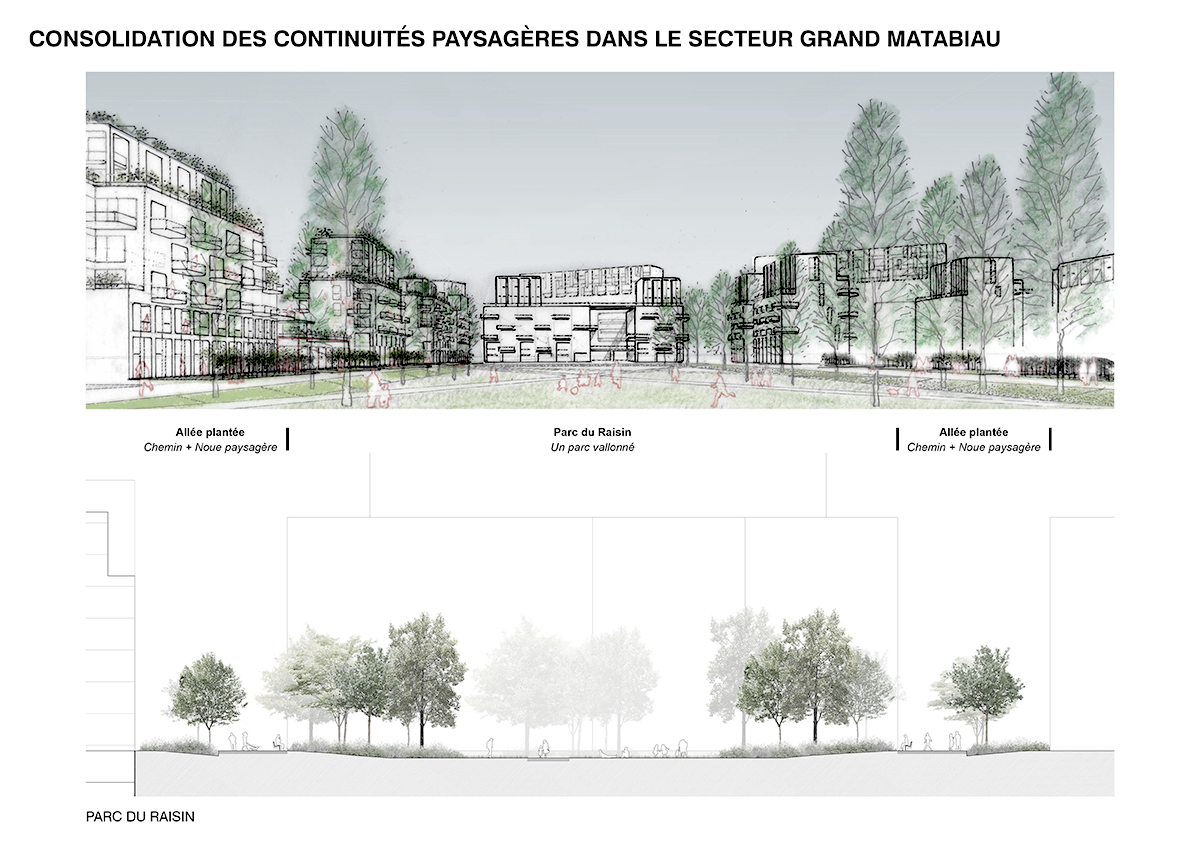
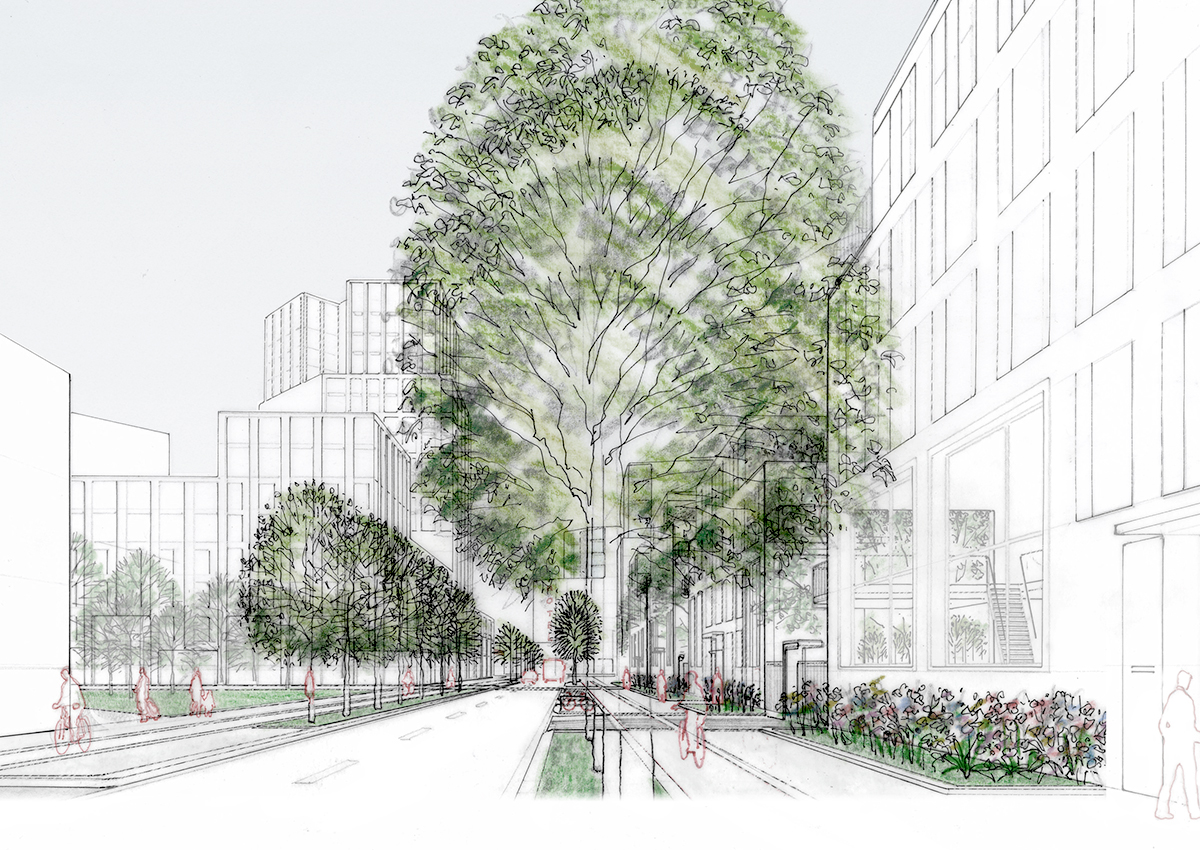
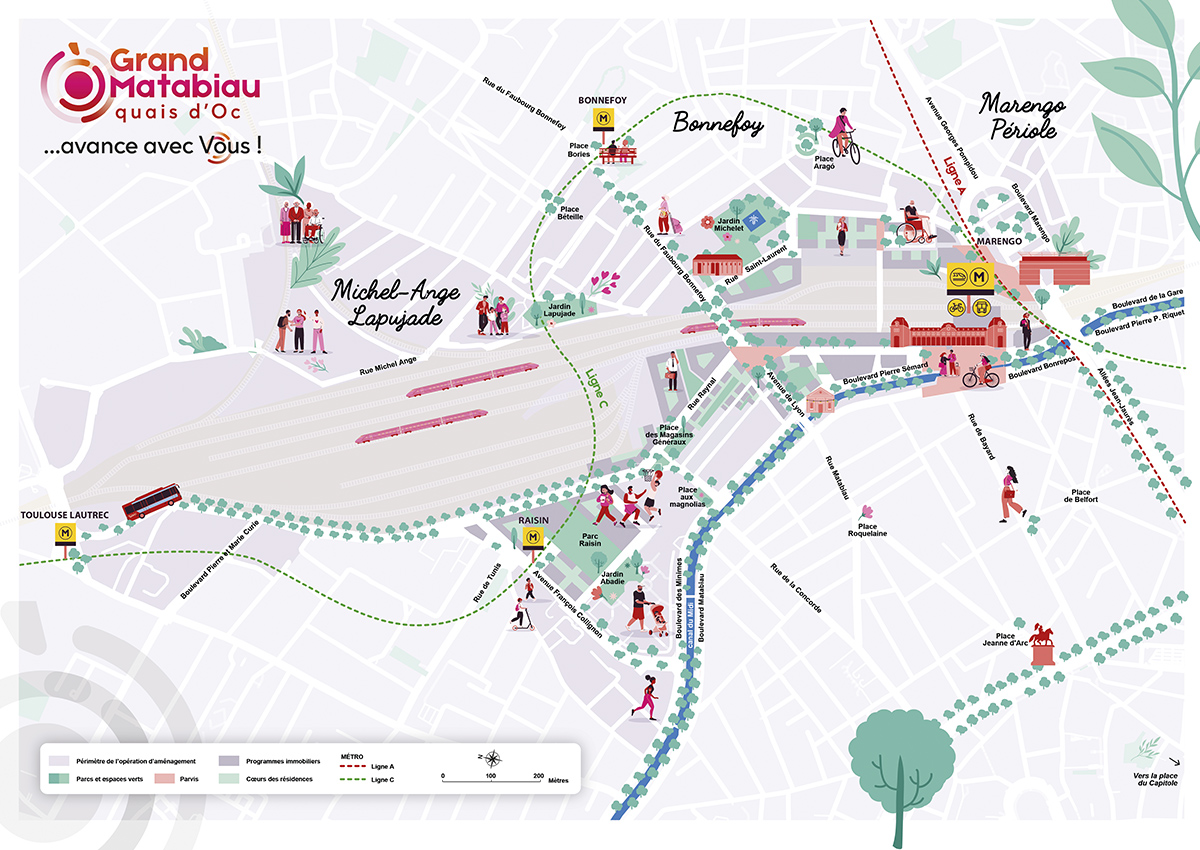

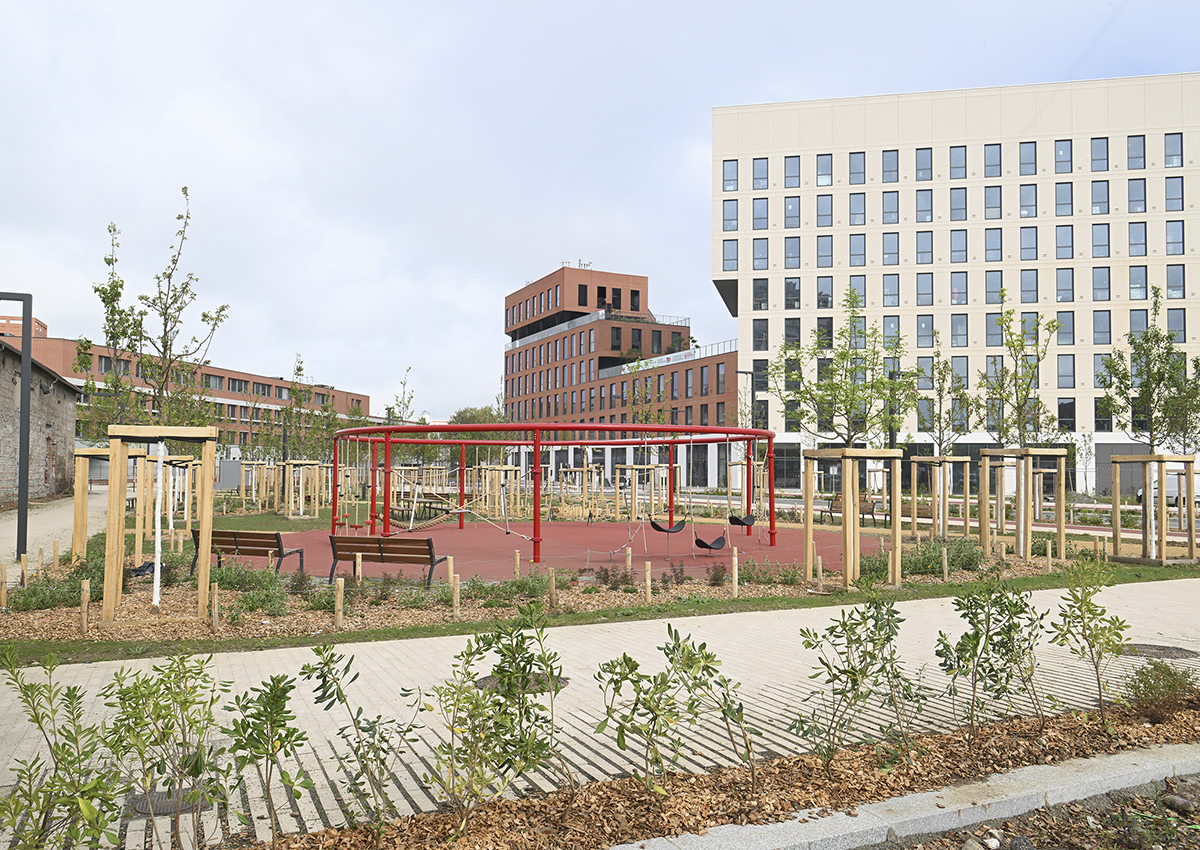

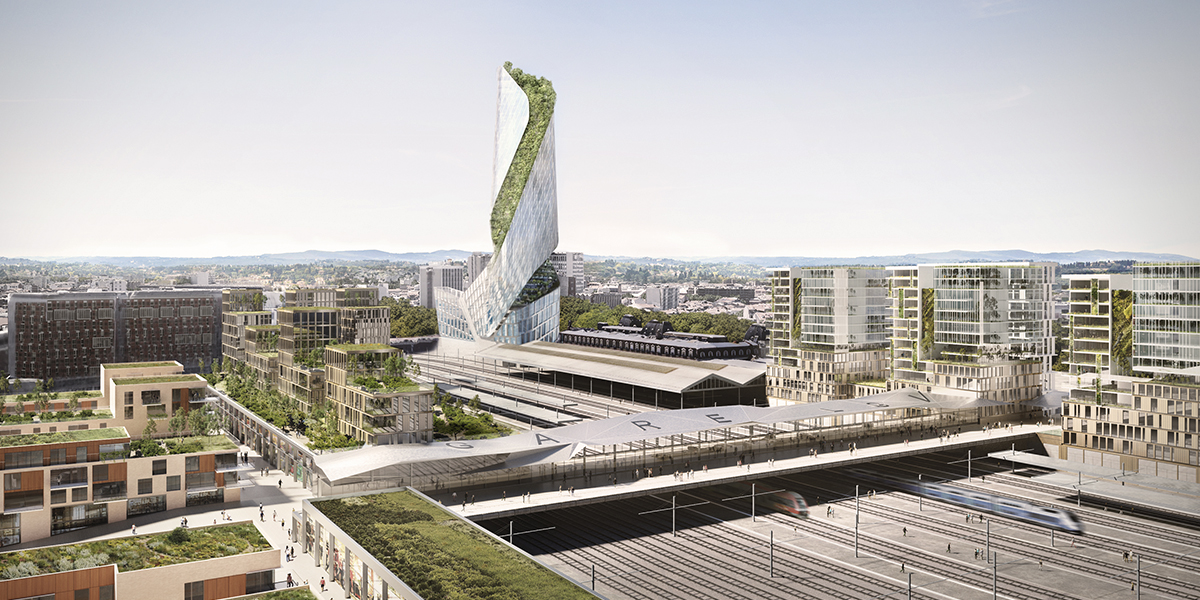
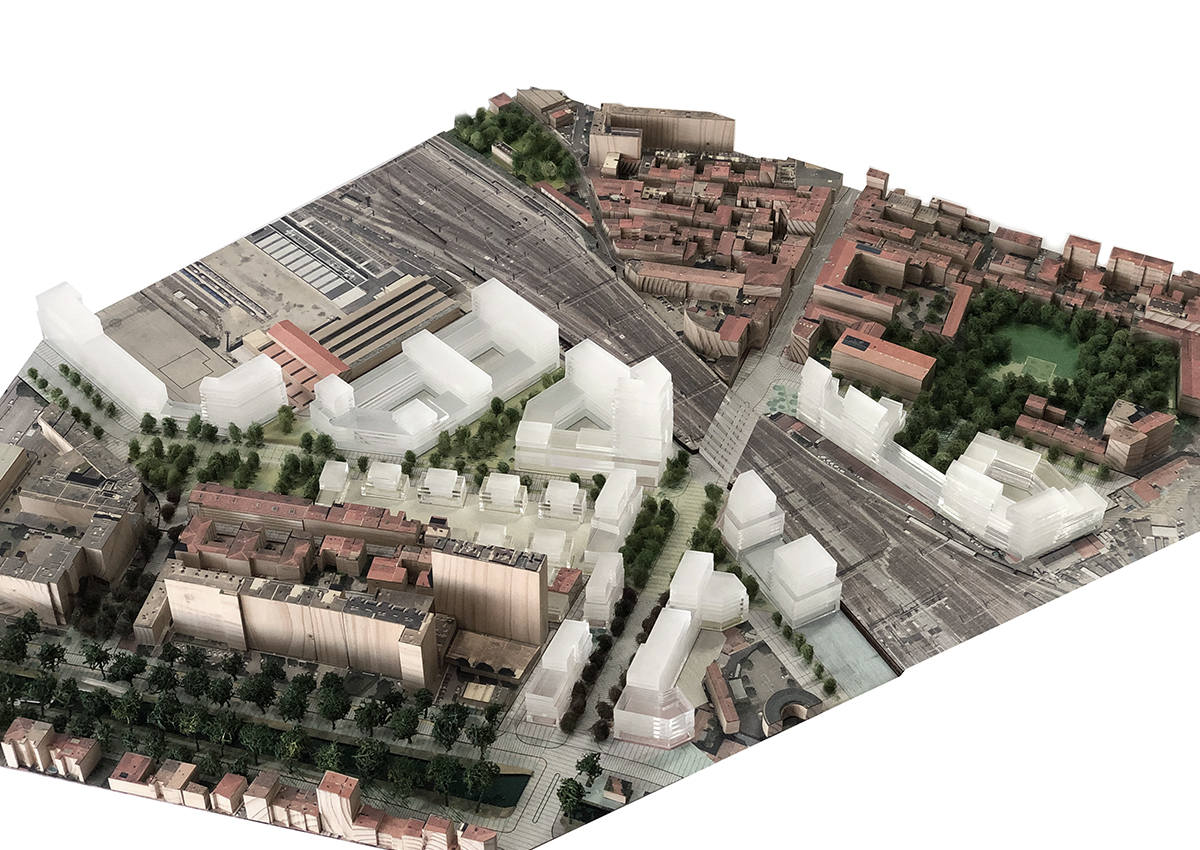
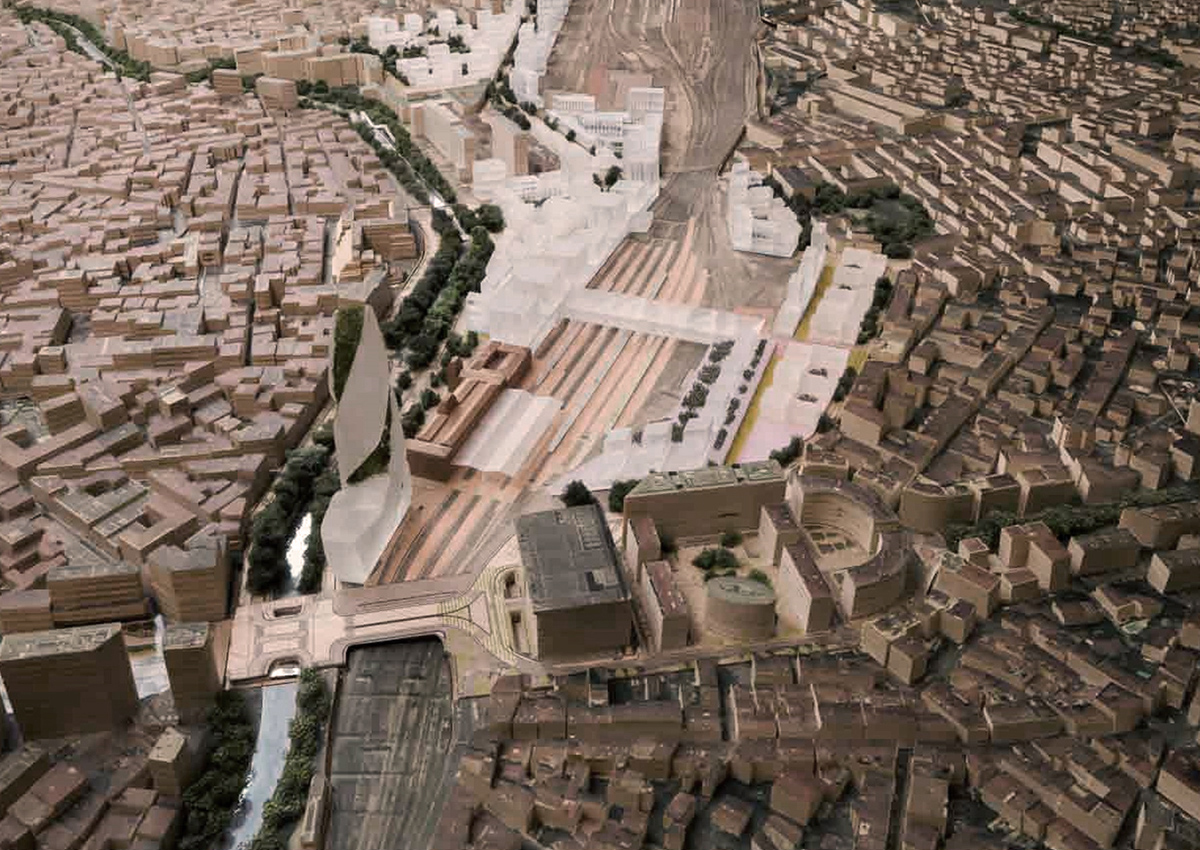
Grand Matabiau Toulouse is an urban development and mobility project that strengthens the metropolitan core around Matabiau Station. It helps build a sustainable city that reduces its carbon footprint and adapts to climate change. The project relies on two key levers: urban and landscape development, and mobility transformation.
Urban and Landscape Development
The goal is to create a city for everyone. The plan offers a balanced mix of housing, offices, local services, and public facilities such as a nursery, school, and gymnasium. In total, 450,000 m² of floor area are planned, including 3,000 homes, 200,000 m² of offices, and 30,000 m² of local retail and services.
In addition, the redevelopment of the Canal du Midi banks and the creation of new green spaces will help cool the city. Over 4 hectares of parks and gardens will be created, with more than 700 new trees improving biodiversity and microclimate. As a result, the area will become greener, more resilient, and more welcoming to residents and visitors.
The second lever focuses on mobility. The project transforms Toulouse-Matabiau Station into a large multimodal hub that connects trains, metro lines, buses, and soft mobility. Therefore, the station area will evolve into a central node for sustainable movement across the city and region.
– The Grand Matabiau – Quais d’Oc project follows clear urban planning principles:
– Build a low-carbon, climate-resilient city.
– Design around daily uses and social expectations, with quality of life at the core.
– Create a district accessible to all.
Finally, the strategy aligns with both mitigation and adaptation to climate change. Environmental guidelines make the project ambitious and exemplary, consistent with the French National Low-Carbon Strategy (SNBC) and the Toulouse Metropolitan Climate–Air–Energy Plan.